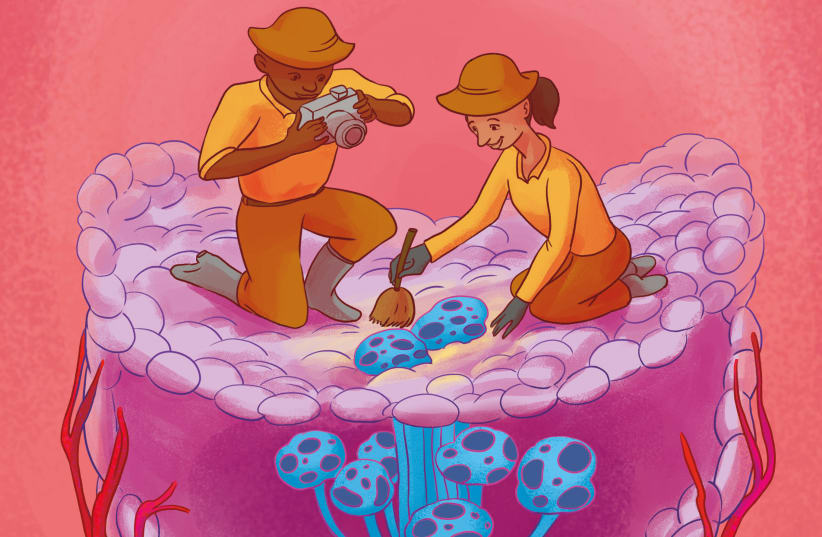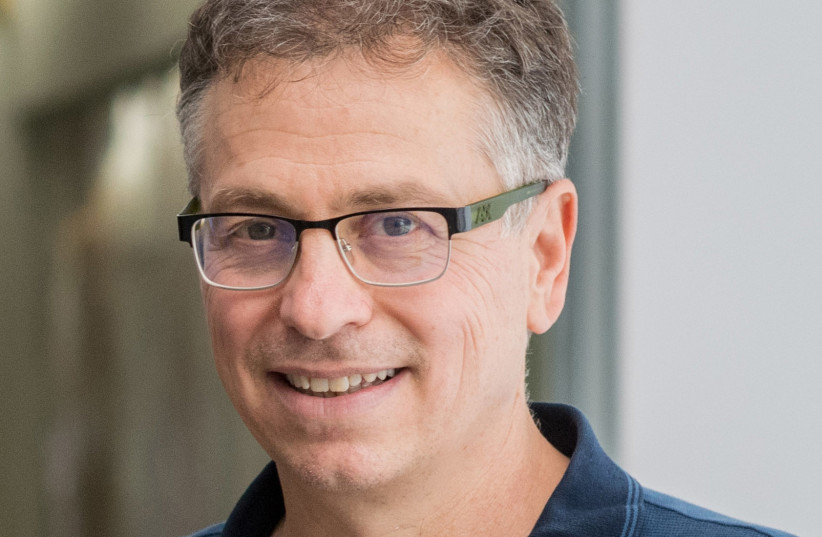Unless they are edible mushrooms, fungi are regarded as harmful to health. But researchers at the Weizmann Institute of Science in Rehovot and the University of California at San Diego (UCSD) have discovered that fungi are living in tumors and, by using blood tests, they may be able to speed up the detection, diagnosis and perhaps even treatment of cancer.
Malignant growths contain multiple species of fungi that differ by the type of the tumor, according to the research, which has just been published in the journal Cell. It complements scientists’ understanding of the interaction between cancer cells and the bacteria that exist in tumors alongside fungi that have already been shown to affect cancer growth, metastasis and response to therapy.
The researchers, who systematically profiled fungal communities in more than 17,000 tissue and blood samples taken from patients with 35 different types of cancer, found that fungi can be detected in all of them. Fungi were mostly found “hiding” inside the cancer cells or in immune cells inside the tumors.
“This study sheds new light on the complex biological environment within tumors, and future research will reveal how fungi affect cancerous growth.”
Prof. Yitzhak Pilpel
The study also revealed multiple correlations between the presence of specific fungi in tumors and conditions related to treatment. For example, breast cancer patients who have Malassezia globosa – a fungus found naturally on the skin – in their tumors had a much lower survival rate than those who didn’t have the fungus. In addition, specific fungi were found to be more prevalent in the breast tumors of older patients than in those of younger ones, in the lung tumors of smokers than in those of nonsmokers, and in melanoma tumors that did not respond to immunotherapy than in tumors that did respond to therapy.
These findings suggest that fungal activity is “a new and emerging hallmark of cancer,” according to Prof. Ravid Straussman of Weizmann’s Molecular Cell Biology Department, who was co-leader of the study. “These findings should drive us to better explore the potential effects of tumor fungi and to reexamine almost everything we know about cancer through a ‘microbiome lens.’”
"The fact that fungi can be found not only in cancer cells but also in immune cells implies that, in the future, we’ll probably find that fungi have some effect not only on the cancer cells but also on immune cells and their activity.”
Prof. Yitzhak Pilpel
The study, which characterized both the fungi and the bacteria that are present in human tumors, demonstrated that typical “hubs” of them can be found in tumors. For example, while tumors that contain Aspergillus fungi tend to have specific bacteria in them, other tumors that contain Malassezia fungi tend to have different bacteria in them. These different “hubs” may be important for treatment, as they correlate with both tumor immunity and patient survival.
“This study sheds new light on the complex biological environment within tumors, and future research will reveal how fungi affect cancerous growth,” predicted Prof. Yitzhak Pilpel, a co-author of the study and a principal investigator in Weizmann’s Molecular Genetics Department. “The fact that fungi can be found not only in cancer cells but also in immune cells implies that in the future, we’ll probably find that fungi have some effect not only on the cancer cells, but also on immune cells and their activity.”
A surprising discovery but one to be expected
The existence of fungi in most human cancers “is both a surprise and to be expected,” said Rob Knight, a professor of pediatrics, bioengineering and computer science at UCSD who co-authored the study. “It is surprising because we don’t know how fungi could get into tumors throughout the body. But it is also expected, because it fits the pattern of healthy microbiomes throughout the body, including the gut, mouth and skin, where bacteria and fungi interact as part of a complex community.”
The new paper also explored the presence of fungal and bacterial DNA in human blood. “The results suggest that measuring microbial DNA in the blood may help in the early detection of cancer, as different microbial DNA signatures can be found in the blood of cancer and non-cancer patients,” concluded Dr. Gregory Sepich-Poore, a former graduate student in Knight’s lab.
Last year, Knight and Sepich-Poore co-founded Micronoma, a company developing a platform that uses microbial biomarkers in blood for the early diagnosis of cancer.


